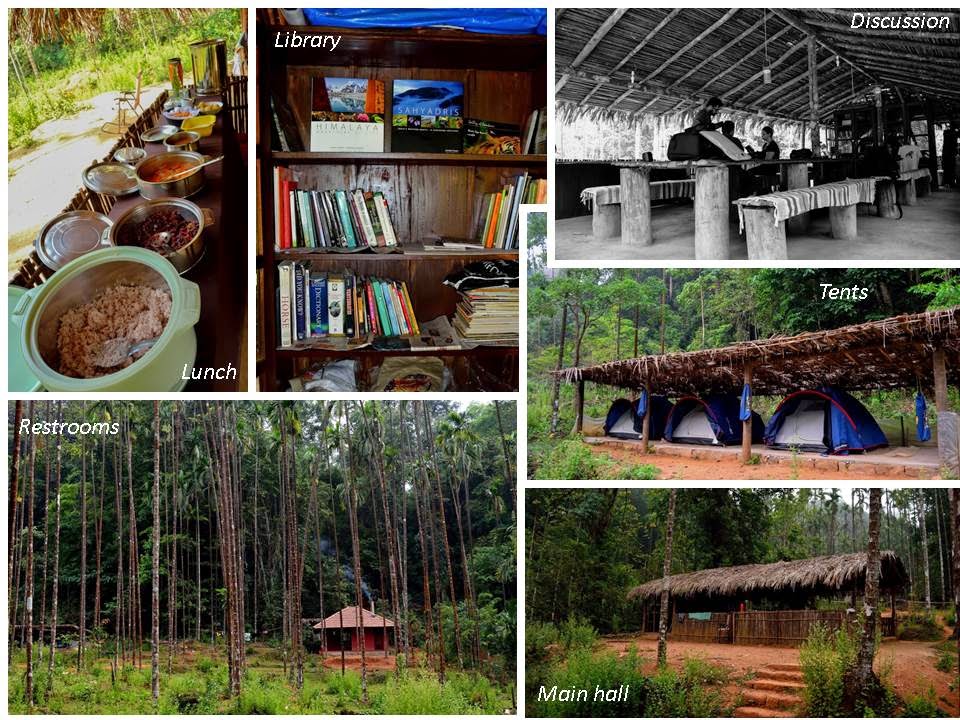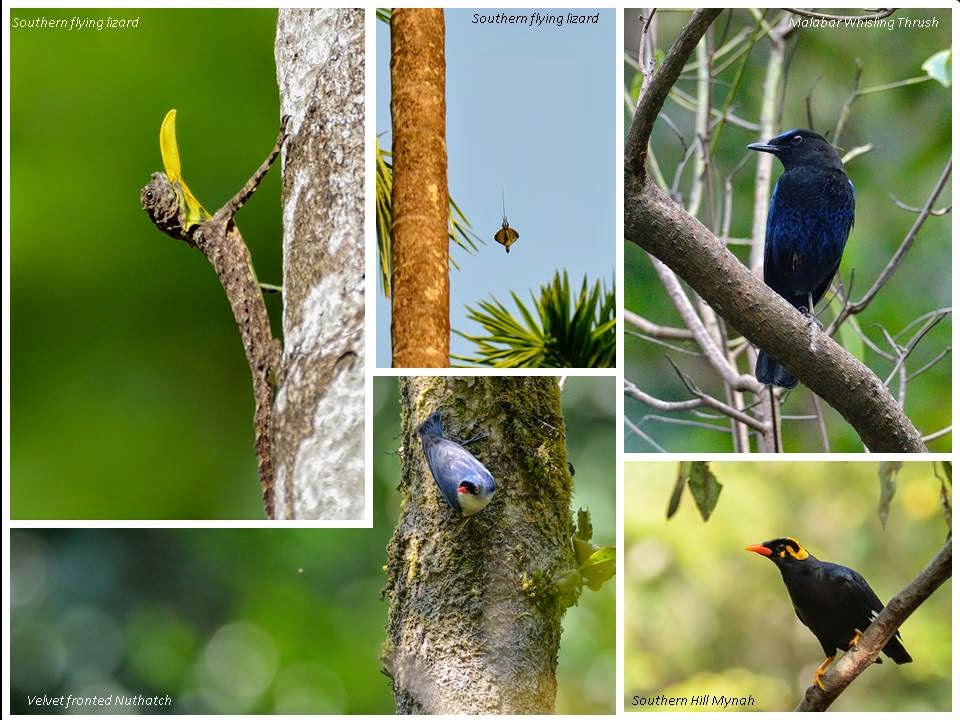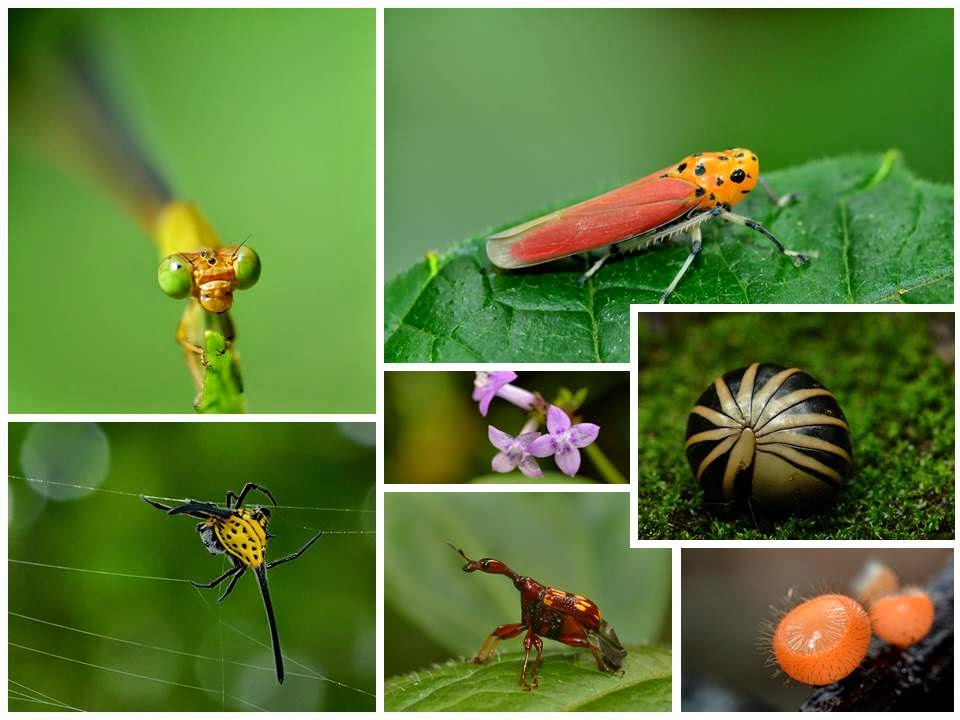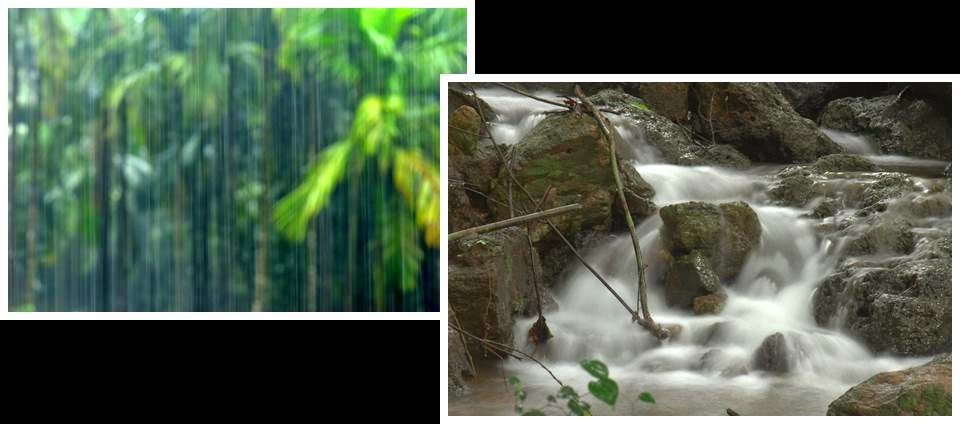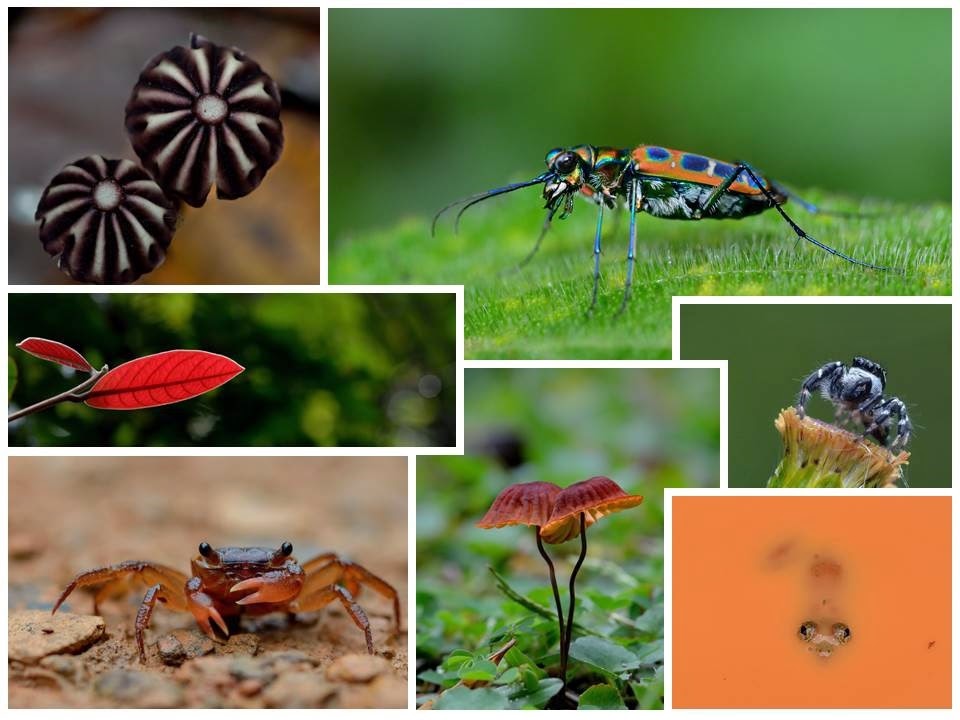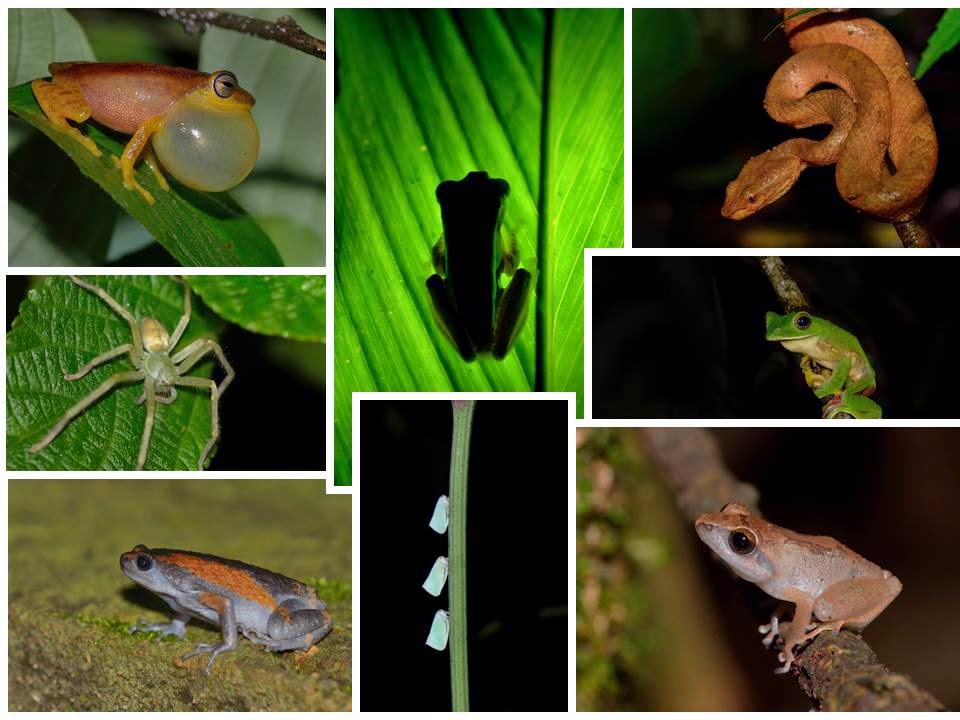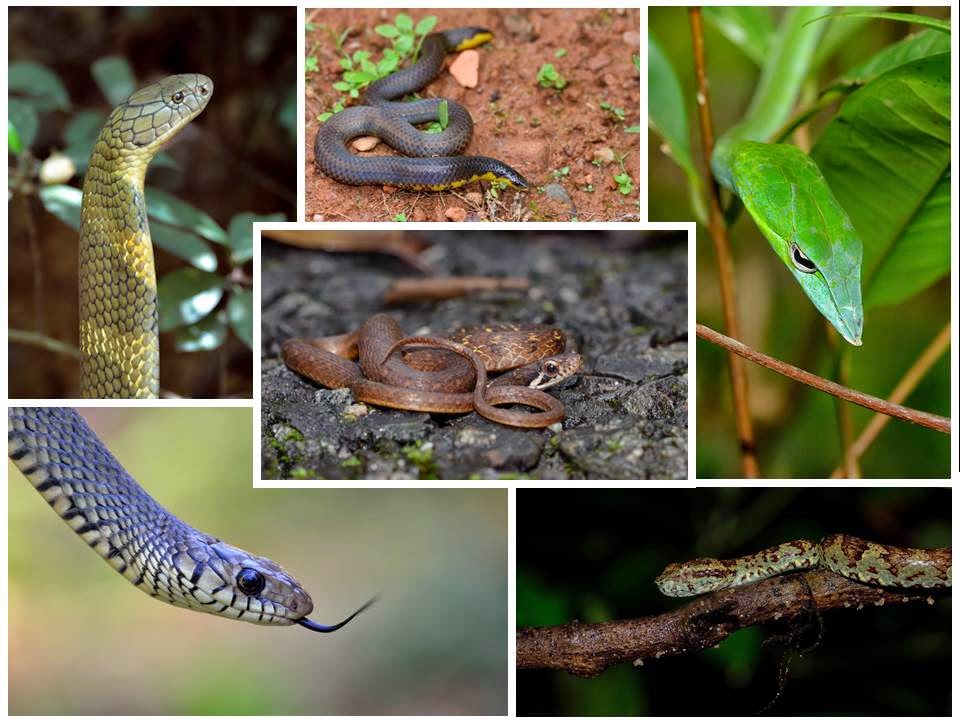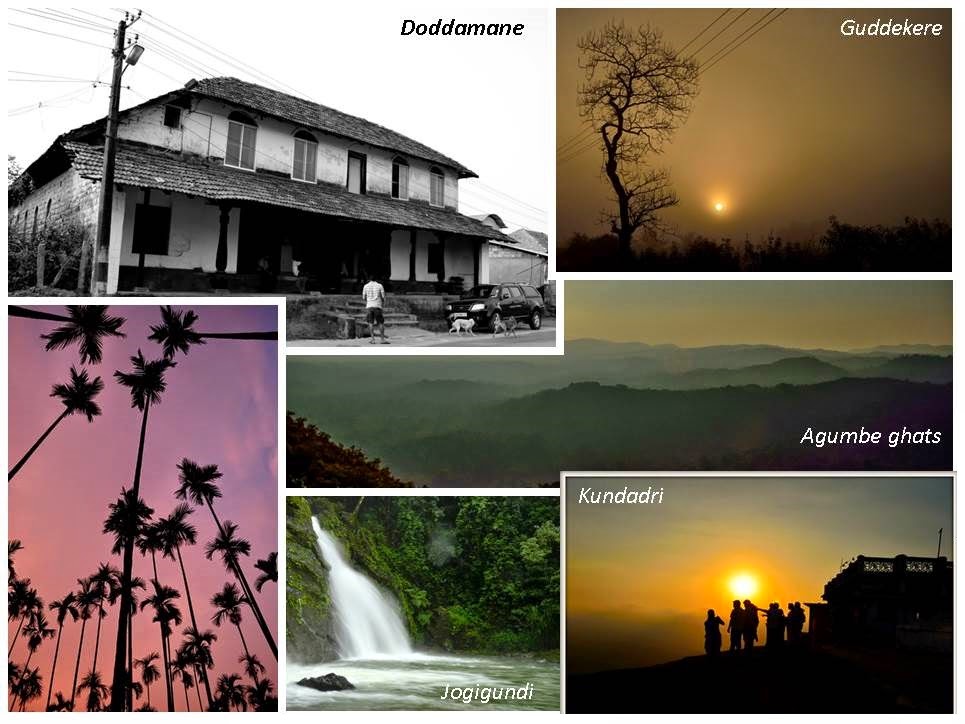Agumbe-This word has been in my thoughts since my childhood for the following three reasons:
1.King Cobras Wildlife documentaries and newspapers talk about this place as a heaven to find King Cobras in South India. This is mostly because many documentaries have been shot here with the help of Gowri Shankar. The King Cobra is my favourite snake for various reasons, it is the largest venomous snake in the world, has a noble look and is the only snake to build a nest.
2. Gowri shankar In a King Cobra documentary of my ever-favourite Herpetologist and Conservationist Romulus Whitaker, I used to admire the snake handling skills of Gowri shankar. Gowri's knowledge and his way of handling snakes earns him admiration from several people including me and he has been my hero since then.
3. Malgudi Days I used to love watching Malgudi days by RK Narayan. When I was informed that most part of this popular series was shot in Agumbe, I wanted to visit this place, specially to see the young boy Swami's house.
It was in May 2012, when I learned that Darter Photography was organising a trip to Agumbe that monsoon, and I started dreaming right away! It was a weekend trip and the bonus was Gowri Shankar would be with us throughout the trip.. The tour itinerary was perfect - I could meet Gowri to learn about snakes, I could visit Doddamane where the television series Malgudi days was shot, and if I am lucky, I could see a King Cobra too.
I have always been a person who hesitated to visit unknown places after 6 PM, even in the cities I had stayed. I was always worried about 2 things - my short sightedness (without my spectacles I am almost blind) and navigational challenges (I am one of those people who get confused between left and right, asks for detailed directions and still manage to get lost). Therefore, roaming around in a forest by foot was out of question.
I met Shreeram MV, Co-founder of Darter Photography and the skipper for the Agumbe trip. He filled some confidence in me and reassured that there will be people around to watch each other. That's how Agumbe began in my life! My first wildlife trip, new to a forest, new to a DSLR camera, new to a tour with unknown people and this excited me beyond measure.
Kalinga Center for Rainforest Ecology (KCRE)
Since then, I have visited Agumbe around seven to eight times, I travelled with Darter, as well as Birdwing. We stay in a place called Kalinga Center for Rainforest Ecology (KCRE) managed by Prashanth and run by Gowri Shankar himself. The KCRE's main focus is to enable Education, Research and Conservation of rainforest species, for anyone who is interested - they can be students, weekend naturalists, photographers, etc.
The place is around 5 km deeper into the forest from Guddekere bus stop, on the way to Agumbe town which is around 8 km away. There is a single KSRTC bus from Bangalore to Agumbe every night at 10 PM. The return bus starts from Agumbe every night at 8 PM. For the return journey only five seats are allocated for online reservation, to make it easier for the native people who have no access to internet.
This place ensures you get the feel of a real rainforest - no connectivity to anywhere. You reach this place by a four-wheel drive from the bus stop and it is the last place you get BSNL mobile connectivity. In KCRE, there is no mobile connectivity, no 3G, no luxurious rooms, and not even electricity. There is a dining area with wooden roof, where we usually assemble, dine and discuss. There is one single concrete structure at KCRE, which is a bathroom complex.
There are three toilets and two bathrooms. They are as neat and clean as your home. I have stayed in properties run by big tourist organizers and resorts managed by at least eight to ten housekeeping staff but have experienced "no water in the tap, when u need" problems. Here in KCRE, we have never faced any issue with housekeeping, irrespective of the fact that it is maintained by very minimal manpower. You get hot water every day.
They serve basic malnad style food - rice-bowls/chow-chow-bath/semiya-upma for breakfast, sambhar,rasam,papad,curd,pickle,rice for lunch and dinner. Chicken/Egg/Dal with chapatis also will be served in the night. Tasty, yummy, simple food is all I can say.
There is a small library with an amazing collection of books on nature by renowned authors. Light source is solar lamps and there are battery packs to charge our camera/torch batteries.
We have to stay in tents on a twin-sharing basis, which we pitch in the evening. Initially I thought tents are not safe. But from my experience of staying in rooms in other rainforests, I realized tents are the safest option. In tents, you just have four corners to watch out for any crawly creepy stuff. And once you zip it, nothing enters in, even mosquitos. Whereas, if you stay in concrete rooms during monsoons, you will have more corners, which you cannot inspect and in my experience, you have more and more crawly animals inside the room.
Sleeping in the tents with the dense forest around, listening to the nightlife of the forest, waking up in the morning with various birds calling feels like being in heaven. One should experience, to relish these moments. In Agumbe, you get misty mornings even in the peak of summer.
The property is adjacent to a beetle nut plantation. Mornings will be fun filled by watching the active bird life and flying lizards. Birds like woodpeckers, flycatchers, minivets, mynahs, nuthatches, imperial pigeons, etc. are all around the place. While having your morning tea/coffee, you can watch Southern Flyinglizards gliding from tree to tree, after a good bask.
The main activity there used to be finding life under foot. There are flowers, beautiful fungi, colourful beetles & bugs, snails, caterpillars, plenty of butterflies, varieties of spiders, frogs, etc. We also find snakes here. Nothing to get scared about snakes too, many are non-venomous, we always take enough precautions to not step on any of them and we are also accompanied by herpetologists. It is actually safer to walk here than in the bushes in cities, where you might encounter the "Big4" venomous snakes more easily.
Monsooon is the best time to visit Agumbe, however other seasons will have its own surprises. Agumbe is rightly called the Chirapunji of South India, as it rains almost 12-15 hours a day during monsoon (mid-June to mid-Sep) forming small beautiful waterfalls and streams in the forest.
Apart from walks, there will be knowledge sharing sessions - about rainforest, about life in rainforest, snakes, snake bites, what to do in snake bite situation, etc., by Gowri Shankar as well as the skipper.
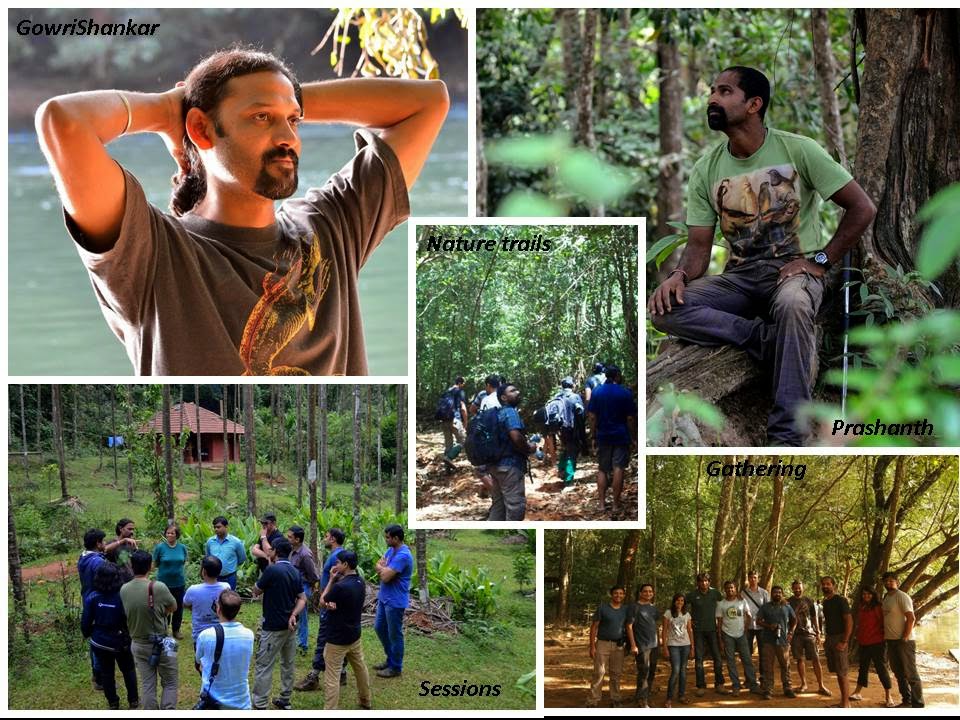
There is a beautiful stream near by the property and for a medium trek there are 2 hillocks as well. Our schedule usually will be walks up to these points and find life on the way. One should visit this place to see various species these rainforests behold- be it fungi or a frog or a bug or a snake. There are so many different species, and you will be undoubtedly amazed.
Highlight of the schedule are the night trails. After dinner, we take our torches and start the night walk. Night walks are the most productive sessions here as many animals are nocturnal by nature. We get numerous different species of frogs, scorpions, tarantulas, snakes and so on. It is good time to observe frogs and know about their reproductive strategies- the mating calls with their vocal sacks ballooned, combat fight among males, fertilising and guarding eggs, etc. This is also a good time to spot some of the nocturnal snakes like pit vipers. Pit vipers are venomous, but usually not fatal to humans. They are ambush predators - stay at a place in attacking position and wait for the prey to come closer. They will wait for even ten days at the same place. They have heat-sensing pits between the eyes and nostrils, which helps them to understand the presence of a warm blooded animal. Believe it or not - one of them, the malabar pit viper comes in almost four to five different colour morphs - yellow, green, orange, brown and a mix of green and purple. Apart from reptiles nad amphibians, we have also seen some of the rare mammals like civet cats in the night trails.
King Cobras are diurnal snakes, usually found active during theday. We have seen king cobras in the property as well. As I previously mentioned, there will be people at all times to watch over the campsite. Apart from King Cobras, we usually see malabar pit vipers, hump-nosed pit vipers, beddome's keelback, checkered keelback, beddome's and collared cat snakes, many green vine snakes and bronzeback tree snakes.
One cannot avoid leeches in a rainforest, and Agumbe is the best place to prove it. During monsoon , the bloodthirsty leeches are all over the place. But the good news is, leeches do not spread any infections/diseases. Their bites are not painful, they could be extremely itchy though. Butthey are any day better than mosquitoes and bed bugs - which spreads life-threatening diseases. There are lotions and creams available to avoid leeches and KCRE also provides leech socks during the walks.
Apart from the creepy crawly creatures, we also get an opportunity to explore the life style of Agumbe town. We visit Doddamane, which is where the popular series Malgudi days was shot, this is now a very old house managedby Kasthuri akka and her mother. We visit an old Jain Temple in the peak of Kundadhri hills, for a spectacular sunset or a view of the Agumbe forest. Other potential places of visit are Agumbe ghats, Jogi gundi waterfalls, and Honagappe waterfalls.
Agumbe - This place enables you to connect with nature; understand what is an ecosystem; realize the importance of maintaining eco-balance; realize that we are just a part of this nature and that none of this is created by us.
Many of us do not realize that rainforests are the key source of our life. To live, we need oxygen, drinking water, food, medicine and shelter. Rainforests provide all of these for free. Many rivers like Godavari, Krishna, Cauvery, Thunga, Bhadra, etc., originate from rainforests. Many of the vegetables and fruits like figs, bananas, mangos, cinnamon, coconuts, cocoas, turmeric, ginger, etc., are from rainforests. Rainforests are known to be the largest pharmacy in the world, with immense medicinal plants and finally, all of us know they hold large amounts of Oxygen.
Statistics say that around 80000 acres of rainforests are destroyed per day in the world today. Which means, we will not have any rainforests in next 50-70 years. We may be the last generation to witness these forests, which gives everything we need for a basic living. It is important to understand what is a rainforest, what is the importance of it in our life and how to protect it.KCRE helps in understanding a rainforest, it is just an over-night journey from Bangalore, so do not miss it while you have the opportunity.
